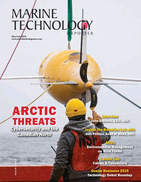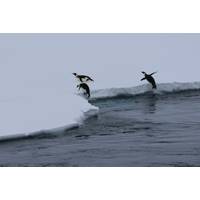
Concern Raised for Major Shift in Antarctic Sea-Ice Coverage
Scientists are questioning whether a ‘regime shift’ to a new state of diminished Antarctic sea-ice coverage is underway, due to recent record lows.If so, it will have impacts across climate, ecological and societal systems, according to new research published in PNAS Nexus.These impacts include ocean warming, increased iceberg calving, habitat loss and sea-level rise, and effects on fisheries, Antarctic tourism, and even the mental health of the global human population.Led by Australian Antarctic Program Partnership oceanographer Dr Edward Doddridge, the international team assessed the
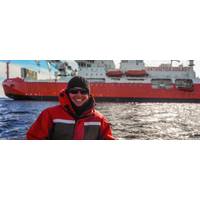
Australian Antarctic Program Appoints Chief Scientist
The Australian Antarctic Program has appointed Professor Nerilie Abram from the Australian National University as its new Chief Scientist.Abram is a professor of climate science and was elected as a Fellow of the Australian Academy of Science in 2024.“I’m incredibly excited and honoured to be taking up the role of Chief Scientist of the AAD,” Abram said. “Antarctica is such a special place, and the science that the Australian Antarctic Program does is critical for protecting Antarctica, and for preparing Australia and the world for how changes in Antarctica will affect us all.

Ice “Memory” to be Protected in Antarctica
The Ice Memory Foundation is preparing for the upcoming transport of ice cores from mountain glaciers to the Ice Memory Sanctuary in Antarctica.The announcement was made as part of the launch of the UN Decade of Action for Cryospheric Sciences (2025-2034) during the third UN Ocean Conference in Nice on June 8.Preserved in the Ice Memory Sanctuary at Concordia Station, the cores will be available for study by future generations of scientists.The first Ice Memory alpine ice cores – extracted between 2016 and 2023 – will leave the laboratory cold rooms of the CNR-ISP in Italy in October.
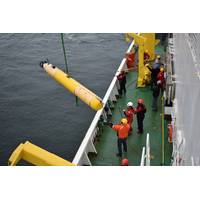
MBARI Research Supports Cryospheric Science
;s robotic floats to the classroom.The flow of water from the seafloor to the ocean at the land-sea interface—known as submarine groundwater discharge—plays an important role in ocean biogeochemistry, marine ecology, and seafloor geology. This process has been challenging to study in Antarctica, where climate change is likely causing fresh to brackish water to leak from the seafloor.MBARI researchers are working to quantify submarine groundwater discharge along the Antarctic Peninsula and understand its environmental impacts. Preliminary findings suggest submarine groundwater discharge

John Siddorn, CEO, National Oceanography Center
industry and society in the blue economy.NOC: A Leader in Ocean StudyThe NOC we know it today dates back to precursor institutions, each with long histories. As a national institution, it was formed in 1949 as the National Institute of Oceanography (NIO). NIO grew from the work of scientists working at Antarctic whaling stations and the complimentary voyages of Captain Scott’s Discovery and a small group of young scientists brought together during the war, to study how the movements of the waves affected amphibious landings.NOC’s operations based in Liverpool stem from the Liverpool Observatory
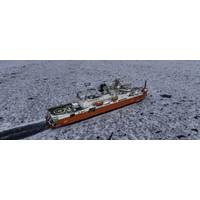
RSV Nuyina Completes Dedicated Marine Science Voyage for the Australian Antarctic Program
The RSV Nuyina, operated by Serco, has returned safely to Hobart after a 9-week dedicated marine science voyage to the Denman Glacier, carrying 85 Australian Antarctic Program expeditioners and 45 crew. In achieving its third 2024/25 season voyage, the Nuyina successfully facilitated research and navigated through harsh environmental conditions, including winds at times reaching 63 knots (116 km/hour), thick ice and frequent periods of very low visibility.The Australian Antarctic Program had previously been unable to access Antarctica’s Denman Glacier—which is of prime scientific interest

Britlift Spreader Proves Value on Royal Research Ship
A modular spreader beam from Britlift is proving a success on the Royal Research Ship (RRS) Sir David Attenborough, one of the most advanced polar research vessels in the world.Operated by the British Antarctic Survey (BAS), this multidisciplinary research platform operates year-round, spending the northern summer in Arctic. During the southern hemisphere summer it is based in Antarctica where its duties include bringing people, equipment and supplies to BAS research stations. The 129m long vessel has a 50-tonne crane for loading and unloading good and equipment, which can include vehicles and plant
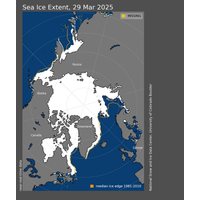
Arctic Sea Ice Hits Record Low Maximum Extent for the Year
; said NSIDC senior research scientist Walt Meier. “But even more importantly than the record low is that this year adds yet another data point to the continuing long-term loss of Arctic sea ice in all seasons.”The record low Arctic maximum extent follows a near-record-low minimum extent for Antarctic sea ice, which was set on March 1, 2025, at 1.98 million square kilometers (764,000 square miles), and tied for the second lowest annual minimum in the satellite record.(NSIDC scientists stress that the Arctic sea ice extent number is preliminary—weather conditions could change the annual
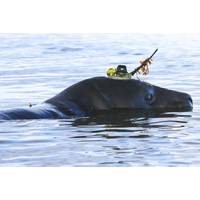
Grander Canyons
slope, and they are an important source of ocean biodiversity, they transport sediment and pollution and they can create hydrocarbon reservoirs.Despite their size and importance, they are still a frontier for scientific research - a new 6,890-foot (2,100 meter) canyon was discovered last year off Antarctica by acousticians on board the icebreaker RSV Nuyina.Earlier this year, scientists at MBARI developed a new investigative technology, Geo-Sense, a new portable instrument that uses distributed acoustic sensing (DAS) technology for long-term, high-resolution monitoring of geological processes in
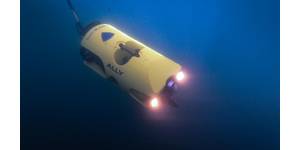
 February 2025
February 2025


